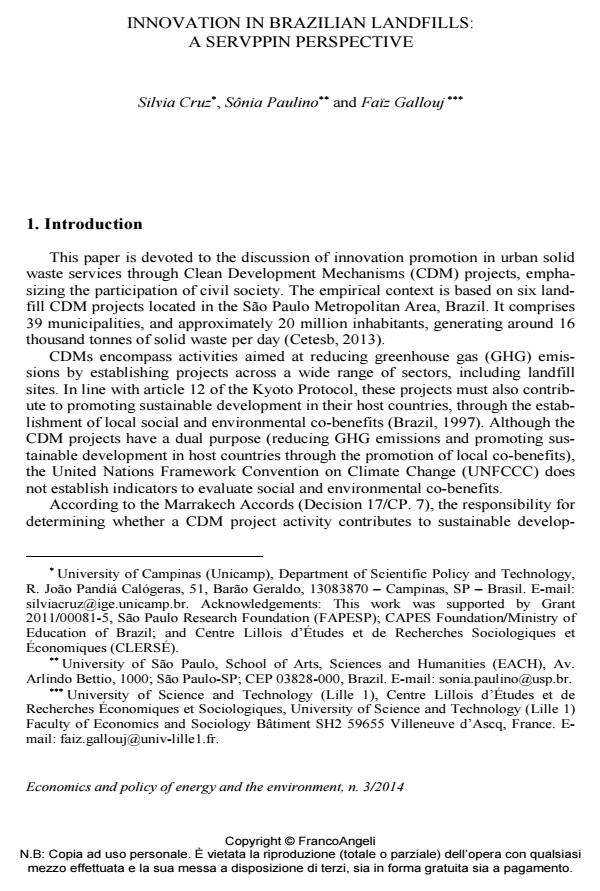Innovation in brazilian landfills: a servppin perspective
Titolo Rivista ECONOMICS AND POLICY OF ENERGY AND THE ENVIRONMENT
Autori/Curatori Silvia Cruz, Sonia Paulino, Faiz Gallouj
Anno di pubblicazione 2015 Fascicolo 2014/3
Lingua Inglese Numero pagine 22 P. 79-100 Dimensione file 1172 KB
DOI 10.3280/EFE2014-003005
Il DOI è il codice a barre della proprietà intellettuale: per saperne di più
clicca qui
Qui sotto puoi vedere in anteprima la prima pagina di questo articolo.
Se questo articolo ti interessa, lo puoi acquistare (e scaricare in formato pdf) seguendo le facili indicazioni per acquistare il download credit. Acquista Download Credits per scaricare questo Articolo in formato PDF

FrancoAngeli è membro della Publishers International Linking Association, Inc (PILA)associazione indipendente e non profit per facilitare (attraverso i servizi tecnologici implementati da CrossRef.org) l’accesso degli studiosi ai contenuti digitali nelle pubblicazioni professionali e scientifiche
This paper is devoted to the discussion of innovation promotion in urban solid waste services through Clean Development Mechanisms (CDM) projects, emphasizing the participation of civil society. The empirical context is based on the municipal solid waste sector in Brazil, taking into account six landfill CDM projects located in the São Paulo Metropolitan Area. The discussion is based on the ServPPIN concept (public-private innovation networks in services). It focuses on the characterization of the landfills selected and on the identification of the stakeholders involved with these landfills, pointing out any participation gaps. The studied context confirms the centrality of multi-agent participation, addressed by the ServPPIN analytical approach, highlighting the wide involvement of several agents, and in particular, the issue of interaction with users. The results indicate that the participation of associations and cooperatives surrounding landfills is still marginal. Bringing this theoretical (ServPPIN) and empirical research (landfill CDM project) together, one can identify a relevant factor affecting the establishment of basic conditions for service innovation converging with the local co-benefits generation: a weak interaction with users.
Parole chiave:ServPPIN, innovation networks, innovation in public services, clean development mechanism, solid waste sector
Jel codes:Q560, Q540, Q530
- Unlocking the process of collaborative innovation - Combining mechanisms of divergence and convergence Chesney Callens, Koen Verhoest, in Public Management Review /2024 pp.1849
DOI: 10.1080/14719037.2023.2171096
Silvia Cruz, Sonia Paulino, Faiz Gallouj, Innovation in brazilian landfills: a servppin perspective in "ECONOMICS AND POLICY OF ENERGY AND THE ENVIRONMENT" 3/2014, pp 79-100, DOI: 10.3280/EFE2014-003005